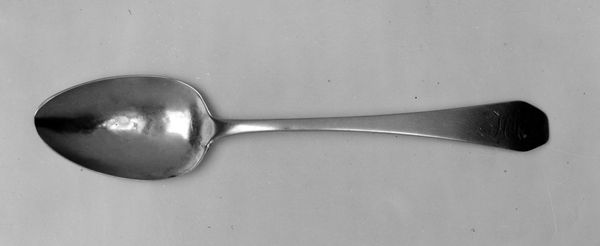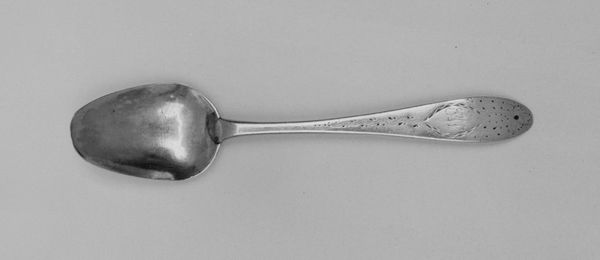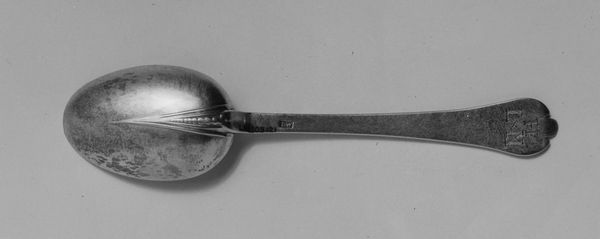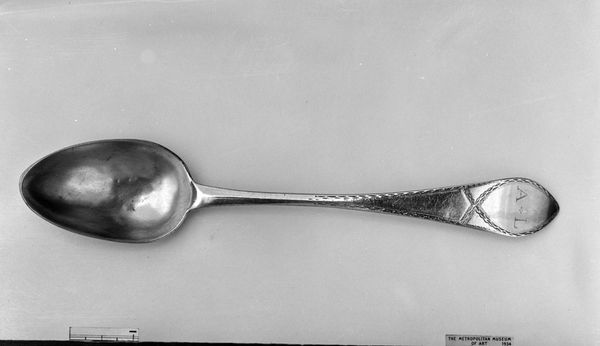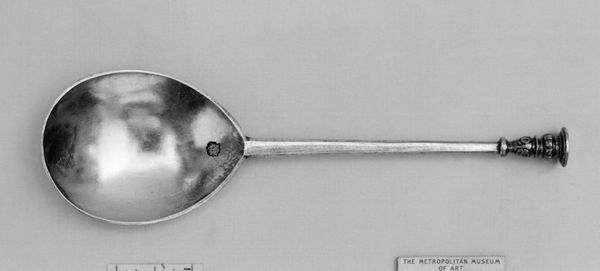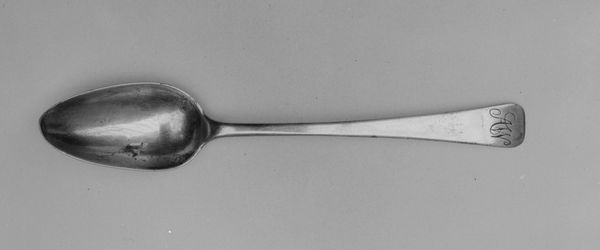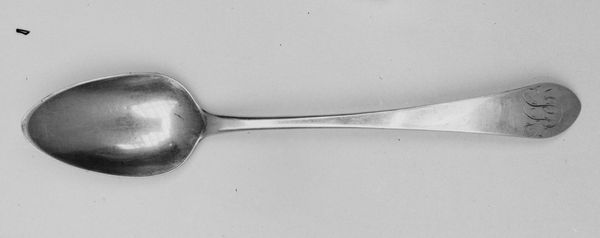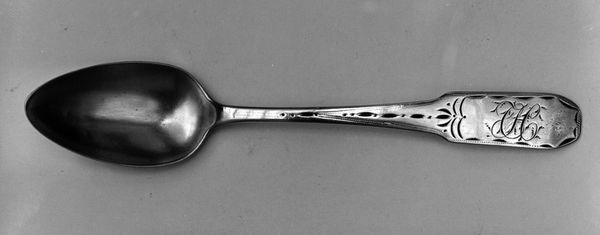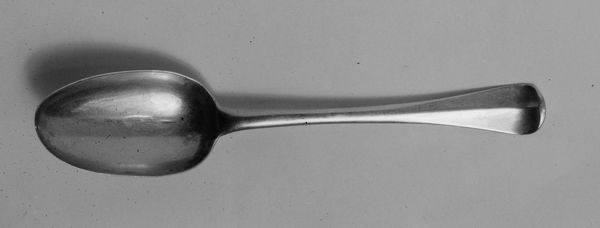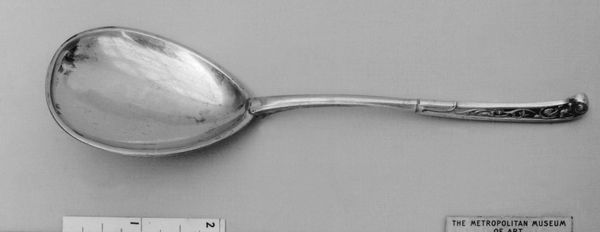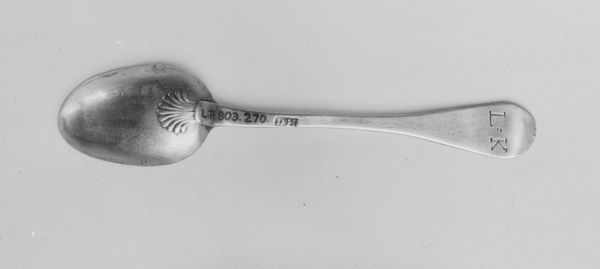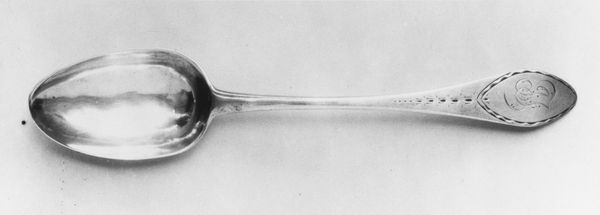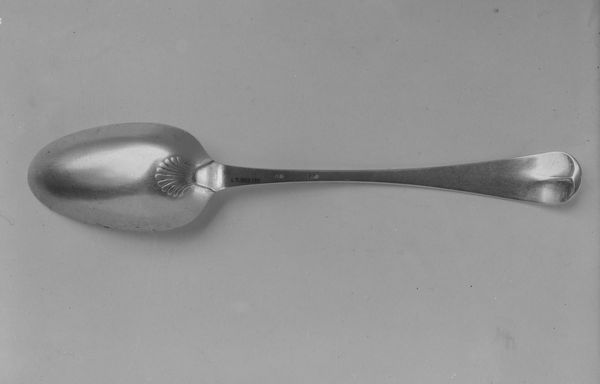
silver, metal
#
silver
#
baroque
#
metal
#
decorative-art
Dimensions: L. 8 in. (20.3 cm)
Copyright: Public Domain
Curator: Here we have a fascinating example of Baroque decorative art. It's a silver spoon, crafted sometime between 1757 and 1760 by N. Barlett. You can find it on display at the Metropolitan Museum of Art. Editor: Oh, I get a Cinderella vibe! Not in a grim way, though, there is this light reflecting quality, it gives the metal a delicate air...makes me think about childhood treats. Curator: Interesting! This object definitely speaks to status, the delicate craftsmanship and use of silver place it within a specific socio-economic context. Think of the rise of elaborate dining customs during that period. This spoon would have been part of that ritual. Editor: Well, it's funny because my first impulse wasn't about fancy banquets. Instead, I saw an echo of simple domestic rituals. There is this sense of an ordinary act transformed by the delicate details: see the Baroque flourishes in the bowl? Everyday magic! Curator: It’s quite compelling to see an emotional tie with this object. The silver, while beautiful, speaks volumes about class and privilege. Objects like this codified the social order. A simple design that held huge power. Editor: So true. Art doesn't live in a vacuum! Although now I find it hard not to think of revolution—forks and spoons raised in protest. This simple spoon suddenly feels like a loaded object, right? Curator: Precisely! What begins as an object of everyday life transforms into a symbol. Editor: You've certainly whetted my appetite, thinking of the wider societal context… Curator: Likewise! Hopefully, this piece encourages everyone to see that even everyday objects can reflect wider ideas about class, status, and cultural aspiration.
Comments
No comments
Be the first to comment and join the conversation on the ultimate creative platform.
